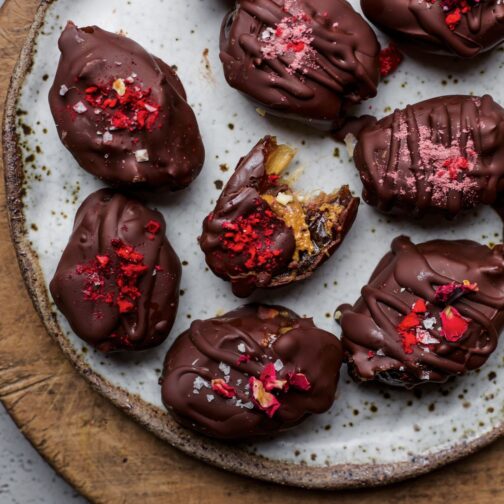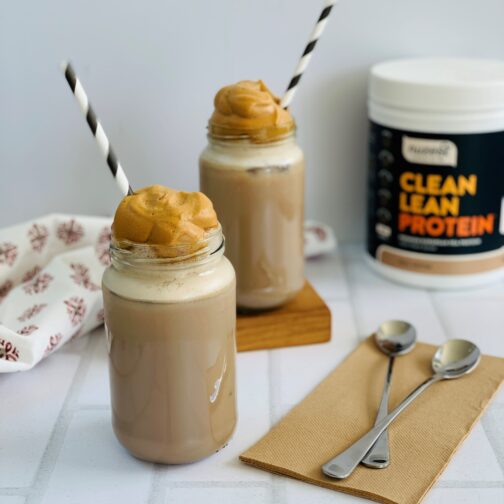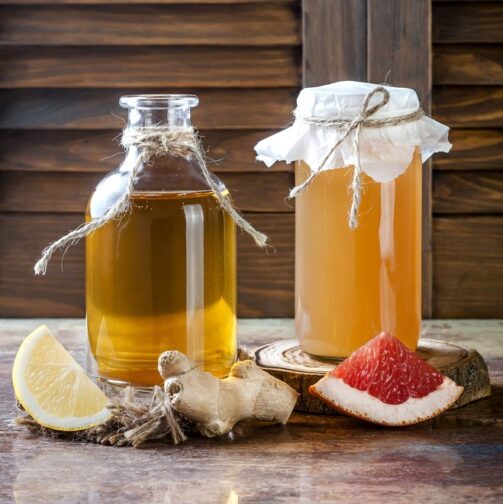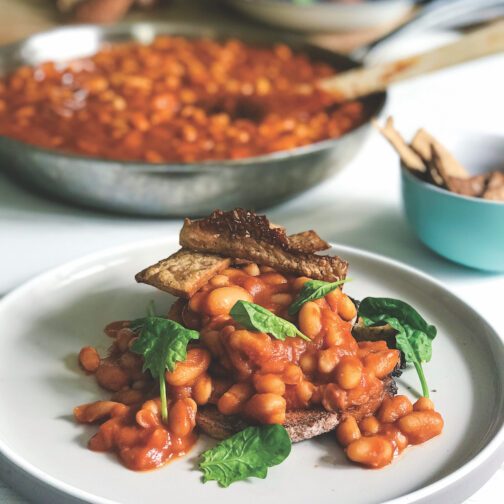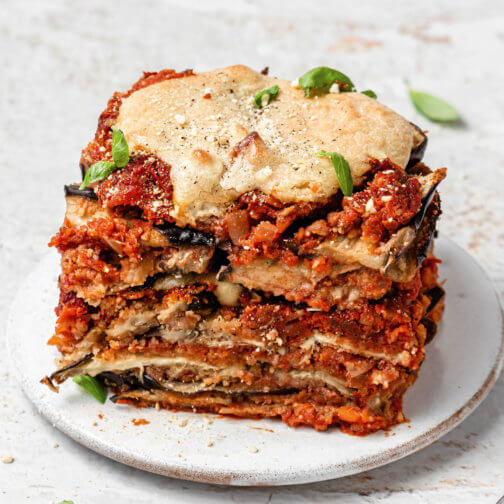
Simon Hill

Nourish magazine issue 76
Buy Now
With a variety of vegetables and surprisingly easy seitan, this herby salad from Simon Hill's Plant Performance e-book provides protein...
What if the single most effective thing you could do to combat climate change was as simple as adjusting your diet?
Acclaimed nutrition expert, author and Plant Proof podcaster Simon Hill shares his top tips on how to achieve and maintain a plant-based...
Simon Hill is a nutrition expert, podcast host, and winner of the Nourish Vegan Awards Change Maker of the Year 2021. Here, he distils his eight...
The greenest groceries are plants – regardless of whether they’re local or organic. Simon Hill explains.
Medjool dates create the creamy caramel centre for this wholefood take on truffles. Simple but sophisticated, they’re sure to impress, whether...
Kombucha is a fermented tea that’s simple to make, and once you have a basic brew you can try lots of different flavours.
Light, citrusy, and super refreshing, this cocktail starring Licor 43 Horchata and limoncello tastes like Mediterranean summer in a glass.
Looking for egg white alternatives? Nicole Maree shows us how to use 'bean juice' also known as aquafaba in your baking.
It’s healthier to make your own baked beans. Plus, this recipe is simply delicious!
A luscious, flavoursome, wholefoods, gluten-free parmigiana that packs a 'nut'ritious protein punch.
If you want to get your gut in order, Dr Will Bulsiewicz is the expert to help you sort out fact from fiction. This is the gut-health cheat sheet...
In the fast-paced and demanding world we live in, finding moments of stillness and calm can be challenging. In an attempt to find a little peace...
Does life feel like an uphill battle? Maybe it’s time for change
Spraying sheets and pillows with calming scents can be a wonderful aid to slumber
The next time you go for a walk, discover the wonder of the everyday world around you
A skincare routine can be a way to nourish yourself inside and out
When the clouds converge, practise gratitude for the smallest of glimmers, and learn to dance in the rain.
With a variety of vegetables and surprisingly easy seitan, this herby salad from Simon Hill's Plant Performance e-book provides protein and sustenance, presented as a mouthwatering plate bursting with flavour and textures.
This recipe is an edited extract from Plant Performance: 21 high-protein, plant-based recipes to optimise your physical performance and recovery by Simon Hill. Published by The Proof.
Seitan recipe: courtesy of Jeremy Butler @bar_night. Food photography and styling: Sally O’Neil @thefitfoodieblog. Photo chef: Sarah Mayoh @msmayohnaise.
E-book available for free download at theproof.com/plant-performance
If you want to get your gut in order, Dr Will Bulsiewicz is the expert to help you sort out fact from fiction. This is the gut-health cheat sheet...
In the fast-paced and demanding world we live in, finding moments of stillness and calm can be challenging. In an attempt to find a little peace...
Does life feel like an uphill battle? Maybe it’s time for change
Spraying sheets and pillows with calming scents can be a wonderful aid to slumber
The next time you go for a walk, discover the wonder of the everyday world around you
A skincare routine can be a way to nourish yourself inside and out
When the clouds converge, practise gratitude for the smallest of glimmers, and learn to dance in the rain.
What if the single most effective thing you could do to combat climate change was as simple as adjusting your diet?
Food has a unique ability to bring people together and is at the heart of our society’s traditions and cultures. Many dishes from around the world have transcended the culinary realm to which they belong, becoming inextricably woven into the fabric of our own personal identities. But while we may view our food choices as a personal matter impacting only our own health and wellbeing, the truth is that what we put on our plate has widespread effects on the planet as well. Indeed, more so than any other direct human activity. What we eat is not only at the heart of our own health challenges but also at the heart of our global climate struggle.
It is estimated that the global food system, which combines emissions related to production, transportation, distribution, retail, and disposal of foods, contributes between 21 and 37 percent of global greenhouse gas emissions. This is second only to energy generation, which is responsible for 35 percent of global emissions. Additionally, how we grow our food is one of the main drivers of deforestation, land clearing, loss of biodiversity and soil degradation, while consuming a staggering 70 percent of all freshwater use.
So, how did we get here? Over time, as societies have grown richer and the population has multiplied, we have developed an affinity for resource-inefficient animal foods. What used to be regarded as occasional foods now feature prominently in most meals of wealthy populations globally. In fact, since the 1960s, the global consumption of animal foods more than tripled. While some view these statistics as a positive indicator for the reduction of hunger across the world, this is not the case. A recent United Nations report on food security and nutrition has shown an increase in the number of people suffering from hunger, with over 800 million people around the world being affected.
It is also undeniable that the mass consumption of animal foods globally is having disastrous effects on our ecosystems. This is largely because raising livestock for human consumption is a grossly inefficient process, and one that requires far more land, water and energy compared to growing plants. Raising animals for food also requires colossal amounts of plant crops to feed these animals, all requiring land, water, and fertilizers in their own right. Growing plant crops to feed livestock to later feed humans also diverts valuable plant crops away from human consumption. There is gross inequity in the world when hundreds of millions of people are facing hunger, yet valuable plant food resources are being used to raise livestock to feed wealthier populations.
And the problems of animal agriculture keep compounding. Beyond the resources required to raise animals for food, livestock such as cows and sheep emit copious amounts of methane, a greenhouse gas that is 28 times more potent than carbon dioxide. In fact, livestock alone is said to account for 14.5 percent of global emissions each year and is a key driver in deforestation and land clearing, also having devastating effects on soil quality and biodiversity loss. In short, in a planet bound by finite land and resources with a climate emergency looming, raising animals for mass consumption is extremely questionable.
Here’s the good news though: if the contribution of livestock agriculture to climate change is a substantial one, its potential as a solution could be equally large. A global shift in our diets away from animal foods and back to a plant-focused diet has the potential to result in a meaningful reduction in global emissions. In fact, countless systematic reviews, life-cycle analyses, and meta-analyses have concluded that the consumption of animal-based foods is associated with the highest environmental impacts.
This is in contrast to the consumption of plant-based foods, which is associated with the lowest environmental impact. Recently, a life-cycle assessment found that even the least sustainable plant food is still significantly more sustainable than the best performing animal food from an environmental perspective. There is now irrefutable scientific consensus that a predominantly or entirely plant-based diet is the most environmentally sustainable diet. This is backed by both the United Nations Intergovernmental Panel on Climate Change (IPCC) and The Lancet, one of the most highly regarded journals in the world.
However, because a global shift in dietary preferences will take time to transpire, it’s important to recognise that small individual changes has an impact that contributes to the global shift. For example, one study estimated that if Americans just swapped beef for beans and otherwise remained omnivores, the country’s emissions could sharply decrease to the point that we could meet our internationally-set emission targets. In other words, it doesn’t have to be all or nothing: every reduction in animal agriculture will yield a corresponding benefit.
The latest IPCC Special Report on Land Use and Climate Change compared different diets with their potential to mitigate climate change. At the top of the list was the vegan diet, with no animal-based foods. Following were vegetarian, flexitarian, and then various reducetarian approaches, including pescatarian and climate carnivore. It is interesting to note that the average diet followed by the majority of the population in developed regions of the world was not included in this list – because this diet simply has no potential to mitigate climate change.
If you are lucky enough to live in a region that grants you equitable access to a variety of healthful plant foods, then removing animal foods from your plate is the easiest and single most effective thing you can do as an individual to reduce your carbon footprint and contribute to lowering global emissions. You’ll have a direct positive impact through reduced emissions as well as indirectly by ‘voting with your dollars’ to influence change in both the food industry and government policies.
In the meantime, I think that the more people we can inspire in our lives to contribute to that change, the better off we’ll all be collectively. The bonus of helping our planet in this way is that you’ll also be helping your body thrive with a healthy plant-based diet. Win-win!
In the fast-paced and demanding world we live in, finding moments of stillness and calm can be challenging. In an attempt to find a little peace...
If you want to get your gut in order, Dr Will Bulsiewicz is the expert to help you sort out fact from fiction. This is the gut-health cheat sheet...
Does life feel like an uphill battle? Maybe it’s time for change
Spraying sheets and pillows with calming scents can be a wonderful aid to slumber
The next time you go for a walk, discover the wonder of the everyday world around you
A skincare routine can be a way to nourish yourself inside and out
When the clouds converge, practise gratitude for the smallest of glimmers, and learn to dance in the rain.
Acclaimed nutrition expert, author and Plant Proof podcaster Simon Hill shares his top tips on how to achieve and maintain a plant-based lifestyle.
There are enormous benefits to putting more plants on your plate. With these practical and mindset hacks, I have seen countless people (myself included) achieve and maintain their plant-based lifestyle goals.
Like many things in life, the hardest part is simply starting. So, start small, get some success and build momentum from there bit by bit.
Simple swaps implemented gradually can be very useful, such as swapping cow’s milk for plant-based milk, red meat for lentils, butter for olive oil and chicken for tofu or tempeh. You will often find that just these single swaps instantly turn a favourite dish of yours into a wholefood, plant-based (WFPB) meal.
Prepare for success by having the foods you need on hand. This will help you stay on track!
By taking your favourite flavour combinations and replacing animal protein with a source of plant protein that provides a similar texture, you’ll have the same experience, or even better, minus the health trade-offs.
When you aren’t used to cooking plant based meals, it can be overwhelming if you head to the supermarket without a plan. When I first transitioned, I selected a handful of easy recipes and used those to create ingredient lists to guide my shopping.
Remember, plant foods are typically much less calorie dense than animal and ultra-processed foods. That means your plate needs to look fuller or you will likely be consuming fewer calories than you are used to and may notice a drop-in energy.
If you are the type of person that feels overwhelmed by a lot of changes, you may find batch cooking removes a bit of the pressure. That way you can cook something new (perhaps a lentil lasagne) and enjoy it for multiple meals.
If you are eating out with friends, especially in the early days where you may feel a little awkward asking the waiter about vegan options, prepare ahead of time by checking out their menu online or giving them a quick call. Additionally, apps like Happy Cow can be really helpful for identifying vegan friendly restaurants.
Sometimes, you may benefit from using a tracking app like Chronometer so you can see how many calories you’re consuming as well as your intake of nutrients of focus.
While it is by no means necessary, having a partner or friend to share your transition with can often make it easier. That way you can learn and progress together.
Remember, we are changing habits that many of us have had for decades, so rather than chasing the perfect transition, it’s best to understand that this is going to involve some trial and error.
Try to avoid judging others and instead lead the way by setting a good example.
![]()
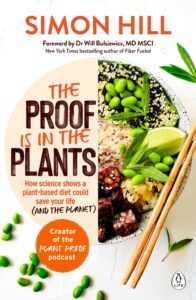 |
This article is an edited extract from The Proof is in the Plants by Simon Hill. Published by Penguin Life. |
In the fast-paced and demanding world we live in, finding moments of stillness and calm can be challenging. In an attempt to find a little peace...
If you want to get your gut in order, Dr Will Bulsiewicz is the expert to help you sort out fact from fiction. This is the gut-health cheat sheet...
Does life feel like an uphill battle? Maybe it’s time for change
Spraying sheets and pillows with calming scents can be a wonderful aid to slumber
The next time you go for a walk, discover the wonder of the everyday world around you
A skincare routine can be a way to nourish yourself inside and out
When the clouds converge, practise gratitude for the smallest of glimmers, and learn to dance in the rain.
Simon Hill is a nutrition expert, podcast host, and winner of the Nourish Vegan Awards Change Maker of the Year 2021. Here, he distils his eight proven principles of a healthy plant-based diet.
There are eight main principles that create the foundation for a successful wholefood, plant-based diet (WFPBD). Together, they make up my Food Pyramid, shared below. Decades of research has shown that a WFPBD is one of a few diets that fits the theme of optimal eating for Homo sapiens, and these principles are a distillation of that evidence. I am confident that no matter what nutrient or diet is in the headlines at a given moment, these principles will stand the test of time.
They are:
When we focus on food groups, given there is enough diversity in our diet, the macronutrients (carbohydrates, protein and fat) take care of themselves. These food groups include fruits, vegetables, whole grains, legumes, nuts and seeds in their whole or minimally processed forms.
Aim for at least 28g per day of fibre if you’re a woman or 38g per day if you’re a man.
Aim for over forty unique plants per week with plenty of different colours. In doing so, you will feed your healthy gut microbes and help them grow stronger.
Paying attention to specific micronutrients will allow you to experience the full benefit of a WFPBD. The nutrients of focus are omega-3s, vitamin B12, vitamin D, calcium, iodine, iron, selenium and zinc.
Optimising meal timing based on our bodies’ natural clock, or circadian rhythm, may help renew our energy levels, promote a healthy body weight and improve our mood while also decreasing our risk of chronic disease and possibly even adding years to our lives.
And minimise alcohol consumption.
Adapt to a way of plant-based eating that works for you.
Keep in mind that this is a lifestyle, and therefore it needs to come with a degree of flexibility. What’s most important is incorporating as much of this information as possible into your lifestyle in a sustainable and enjoyable manner. Consistency over time matters far more than what you eat in one particular day.
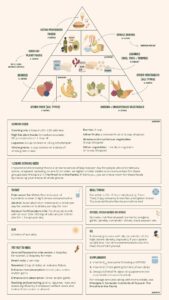
Pyramid graphic as seen in The Proof is in the Plants and at theproof.com/guides.
![]()
 |
This article is an edited extract from The Proof is in the Plants by Simon Hill. Published by Penguin Life. |
In the fast-paced and demanding world we live in, finding moments of stillness and calm can be challenging. In an attempt to find a little peace...
If you want to get your gut in order, Dr Will Bulsiewicz is the expert to help you sort out fact from fiction. This is the gut-health cheat sheet...
Does life feel like an uphill battle? Maybe it’s time for change
Spraying sheets and pillows with calming scents can be a wonderful aid to slumber
The next time you go for a walk, discover the wonder of the everyday world around you
A skincare routine can be a way to nourish yourself inside and out
When the clouds converge, practise gratitude for the smallest of glimmers, and learn to dance in the rain.
The greenest groceries are plants – regardless of whether they’re local or organic. Simon Hill explains.
If we want to lower the environmental footprint of our meals, what we eat is far more important than where our food has travelled from, or whether it was organically or conventionally produced.
We’ve all heard this catch-cry, but if you’re like me, you may have wondered about the actual environmental impact of these choices.
When it comes to eating locally produced food, it’s important to understand that for most foods, transportation emissions only make up a small amount of the food’s total greenhouse gas emissions – typically less than 10 percent. The main drivers of emissions in our food system, accounting for 80 percent of most foods’ environmental footprint, are land use change (e.g. deforestation) and farming (emissions from animals, farming equipment, fertilisers, etc.).
Supporting local businesses often gives you the opportunity to find out what practices farms are using so you can buy from those who are dedicated to looking after their land and nourishing the soil. However, it’s important that we don’t let the feel-good aspect of this distract us from the fact that the percentage of animal products in our diet, particularly red meat and dairy, is single-handedly the most important contributor to our food-related emissions, regardless of whether they were farmed locally, conventionally, free-range or organically.
Similarly, the ‘organic versus conventional farming’ debate detracts from what is most important – the percentage of animal based foods in our diet.
There is actually no clear winner when it comes to the environmental impact of organic versus conventional food. For example, based on data from 742 agriculture systems and over ninety foods, while certain food groups such as fruits produce fewer emissions when organically grown, others such as vegetables produce fewer emissions when conventionally grown.
Furthermore, while organic farming typically uses less energy because it does not require the same energy-intensive chemical inputs, it requires substantially more land to produce the same amount of food because the yield is lower, and it is responsible for greater pollution of our waterways due to nitrogen and phosphorus that leaches from manure, its primary fertiliser.
This extends to animal foods as well. Unfortunately, many of the claims about the environmentally friendly nature of organic animal products are not supported by science. Animals raised on organic farms take longer to grow to slaughter weight, produce less meat, and require more land. As a result, the greenhouse gas emissions from grass-fed organic beef, lamb, chicken, pork and eggs are typically greater than their conventional counterparts.
***
The point here is not to write off organic or local food altogether but to remind us not to lose sight of the forest for the trees. When it comes to lowering the environmental footprint of our diet, the biggest difference we can make is through eating more whole plant foods and fewer animal foods. Not through buying organic or local.
![]()
 |
This article is an edited extract from The Proof is in the Plants by Simon Hill. Published by Penguin Life. |
In the fast-paced and demanding world we live in, finding moments of stillness and calm can be challenging. In an attempt to find a little peace...
If you want to get your gut in order, Dr Will Bulsiewicz is the expert to help you sort out fact from fiction. This is the gut-health cheat sheet...
Does life feel like an uphill battle? Maybe it’s time for change
Spraying sheets and pillows with calming scents can be a wonderful aid to slumber
The next time you go for a walk, discover the wonder of the everyday world around you
A skincare routine can be a way to nourish yourself inside and out
When the clouds converge, practise gratitude for the smallest of glimmers, and learn to dance in the rain.
Subscription Options
to receive regular Nourish updates and offers directly in your inbox.
Interested in partnerships, submissions or providing more detailed feedback? Please visit our contact us page.
